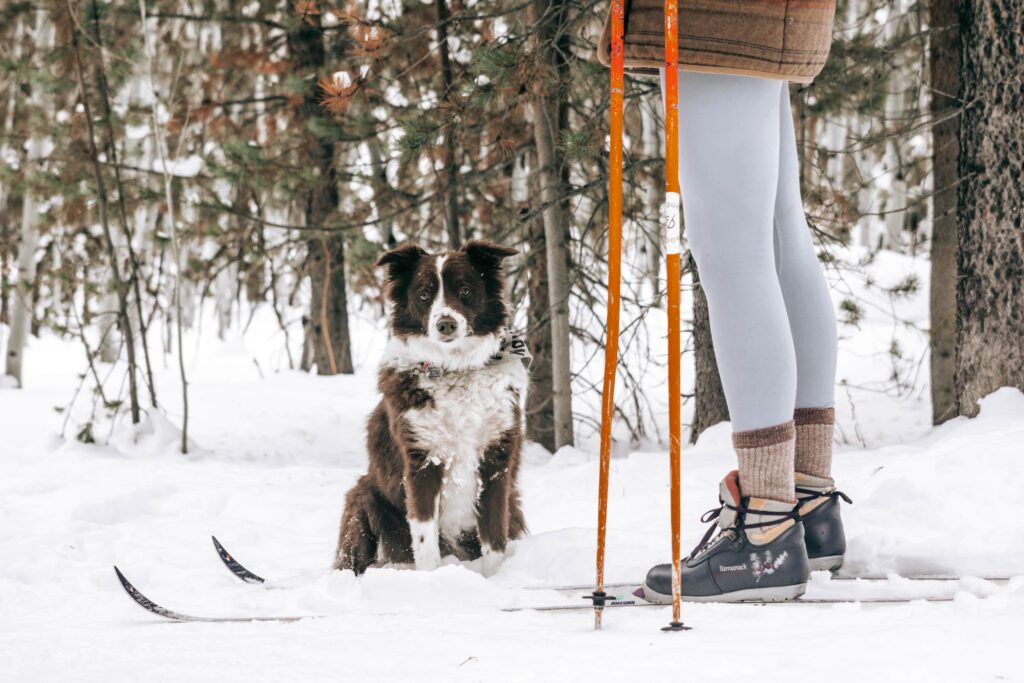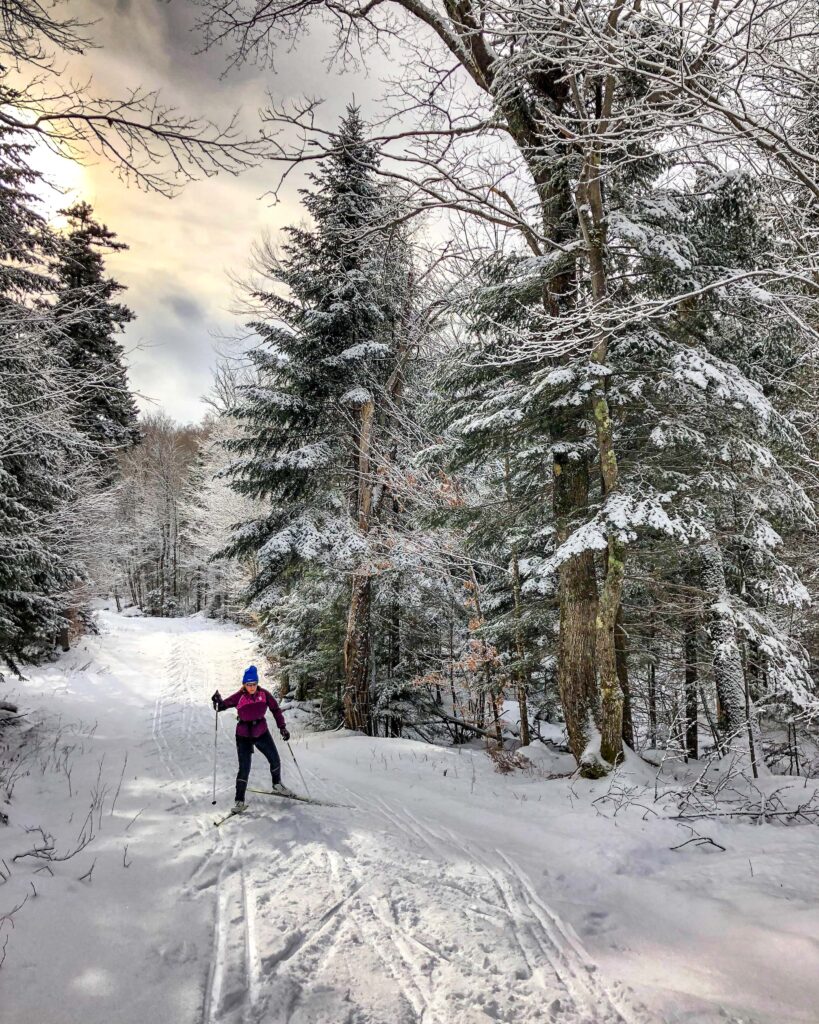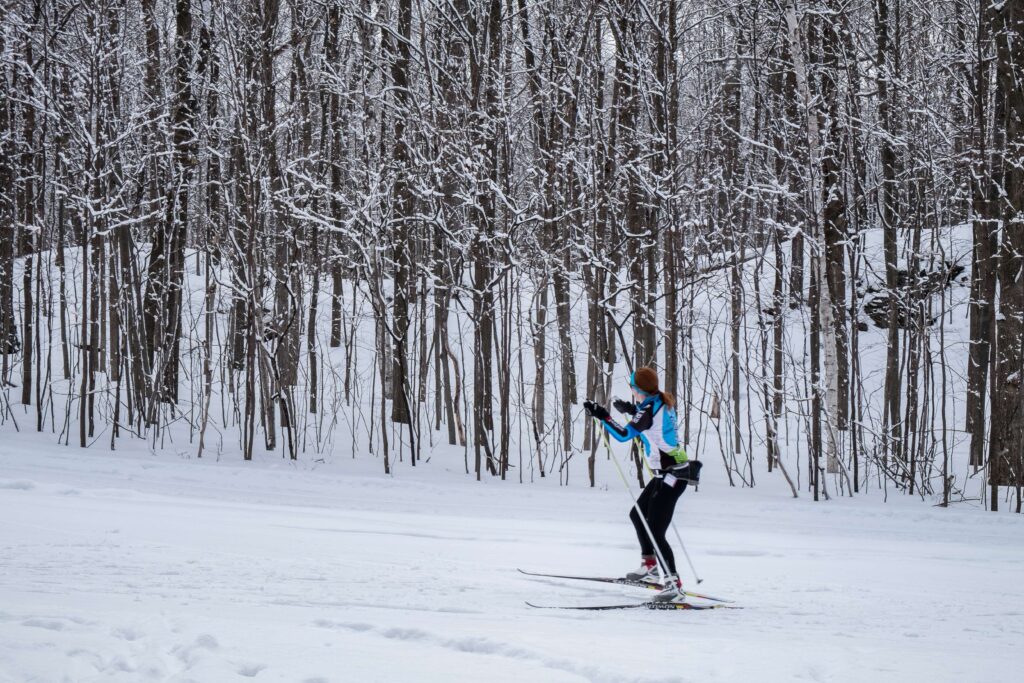Cross-country skiing is a classic winter activity and sport! It has been around for centuries and is enjoyed in multiple regions around the globe. With more people than ever wanting to get outside and learn new winter activities, Duluth Pack wanted to answer frequently asked questions about cross-country skiing, otherwise known as nordic skiing. After reading this blog post, you will know what gear you need and a brief history of how cross-country skiing began.
Where Did Cross-Country Skiing Begin?
Cross-country skiing is confirmed to have initially begun in Scandinavia over 5,000 years ago. According to Visma Ski Classics, some believe that cross-country skiing may have started as early as 600 BCE in China. Cross-country skiing began as a way to move across snow-covered terrain and then expanded into recreation and sport.
How Has Cross-Country Skiing Changed?
Originally when cross-country skiing began, the skier only had one long ski pole or spear to pull them along the terrain. In Norway, they would often have two different skis as well. They would have a shorter ski and a longer ski for gliding. Now cross-country skiing consists of two longer skinnier skis for gliding over the snow and poles for propelling the skier forward and for balance.

While cross-country skiing used to occur solely as a means of travel in the winter months, it has now evolved as a competitive sport and recreational hobby worldwide. In 1925 the first FIS Nordic World Ski Championships took place for men, and in 1954 women also began to compete. As a result, many now also know cross-country skiing as nordic skiing and participate in the original form of cross-country skiing, referred to as classic cross-country skiing, and the newer adaptation of nordic skiing, skate skiing.
What Gear Do You Need For Cross-Country Skiing?
Cross-country skiing requires some gear to get into the sport, but many places also rent equipment. By renting, you can test out your enjoyment of the sport before committing to specific gear. Duluth Pack has pulled together a list of commonly used items and gear needed for nordic skiing.

- Cross-country ski’s sized for your body
- Cross-country ski boots
- Cross-country ski poles
- Winter apparel that is suitable for the weather
- Beanie
- Base layers
- Warm socks
- Gloves
- Sunglasses
If you are going for a longer duration, you may also want to bring a daypack like the Duluth Pack Sling Pack. This way, you can bring plenty of water and snacks to keep your body properly fueled.
What Are The Two Types of Cross-Country Skiing?
Skate Cross-Country Skiing
Skate cross-country skiing is done by pushing your skis outward, similarly to how you would ice skate. The motion of pushing your foot out and off the snow forces your grip zone on your ski to touch the snow. The grip zone of your cross-country ski is placed so that when you are gliding, it will not touch the ground, but it will touch when you apply specific pressure on the ski. This gives you better control to propel yourself forward while skiing.
Classic Cross-country Skiing
Classic cross-country skiing is done by moving your skis similarly to a running shuffle. While skiing, you keep your skis pointed forward and do not push your foot out like in skate skiing. Instead, you will push your foot down and backward like walking. Nordic ski boots do not clip into the back of your skis as they would for alpine skiing, thus allowing you to shuffle. To get a rhythm for nordic skiing, you will want to move your arms and poles in opposition to your feet.
Which Type Of Cross-Country Skiing Is Easier?
Both types of cross-country skiing offer different benefits. When you are learning how to ski for the first time, it is encouraged to start with classic cross-country skiing on groomed trails. By starting on groomed trails, you can get the hang of the motions, and the tracks will keep your skis in the right direction. Cross-country skate skiing is faster but can be trickier to master, so you may want to work up to this style. Whichever method you choose to learn, you should consider taking a lesson at a rental center to understand proper form. It is much easier to practice and improve correct form than to reteach and retrain improper form.

Don’t let the colder weather keep you from enjoying the great outdoors! You can now add cross-country skiing to your list of new winter activities to try this year. Simply bundle up in some cozy Duluth Pack apparel and get outside to enjoy winter and all it has to offer.
When you finish up on the trails, put on some dry apparel, wrap up in a blanket, and sip some cocoa by the fire to finish off a great day.
Happy skiing, friends!


Be the first to comment on “The History of Cross-Country Skiing”